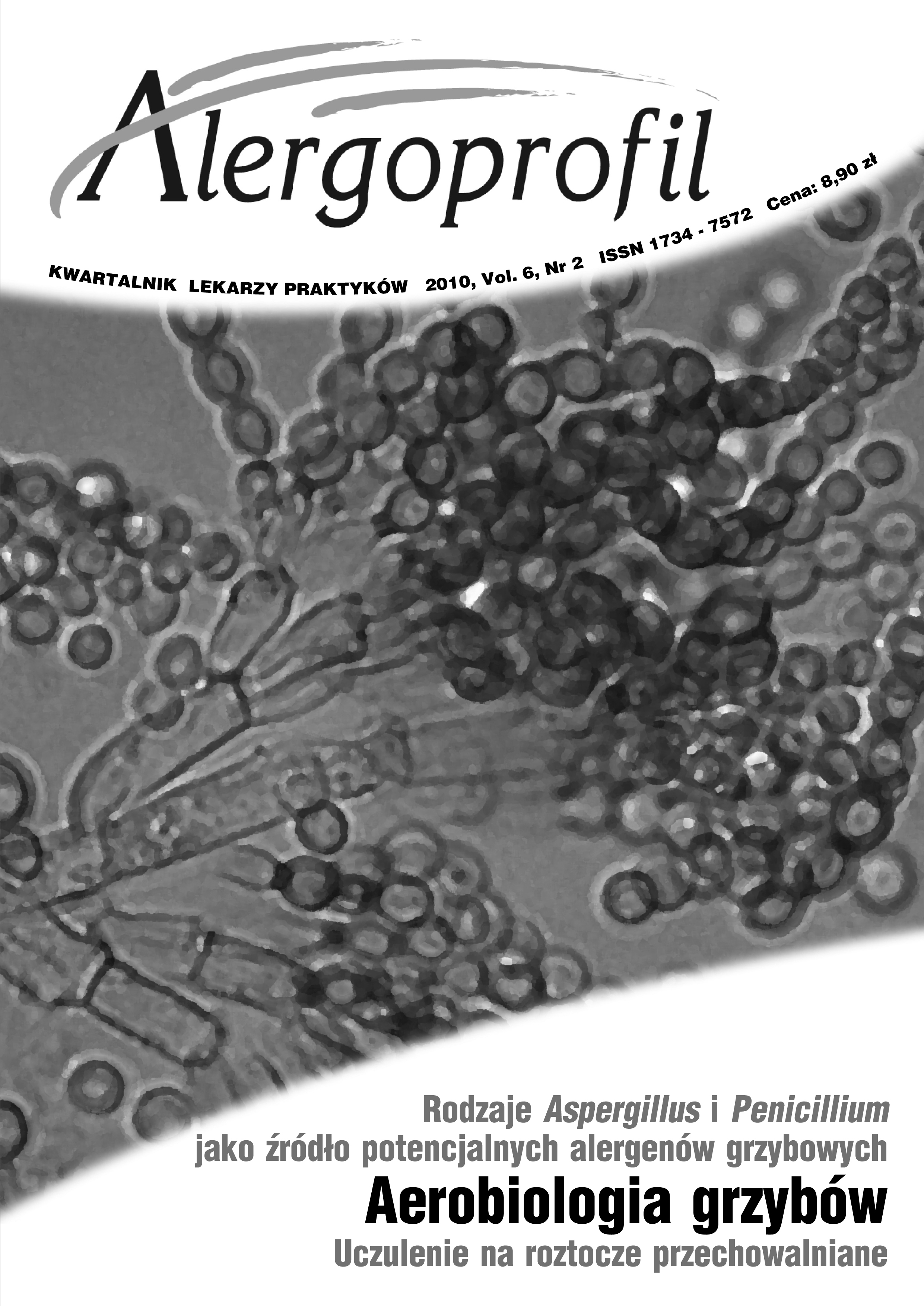Zastosowanie eukapnicznej hiperwentylacji w rozpoznawaniu bronchospazmu powysiłkowego u wyczynowych sportowców
##plugins.themes.bootstrap3.article.main##
Abstrakt
Bronchospazm powysiłkowy (EIB) jest ostrym, przemijającym upośledzeniem drożności oskrzeli pojawiającym się zwykle 5–10 minut po intensywnym wysiłku fizycznym. Głównym czynnikiem wywołującym EIB jest utrata wody z dróg oddechowych spowodowana hiperwentylacją w odpowiedzi na wysiłek fizyczny. Nadrozpoznawalność bronchospazmu powysiłkowego u wyczynowych atletów przyczyniła się do poszukiwania obiektywnych metod rozpoznawania EIB. Obecnie istnieje wiele metod, zarówno bezpośrednich, jak i pośrednich, diagnozowania EIB. Jedną z nich jest eukapniczna hiperwentylacja, uznana za obiektywną oraz optymalną metodę rozpoznawania EIB.
Pobrania
##plugins.themes.bootstrap3.article.details##
Copyright: © Medical Education sp. z o.o. This is an Open Access article distributed under the terms of the Attribution-NonCommercial 4.0 International (CC BY-NC 4.0). License (https://creativecommons.org/licenses/by-nc/4.0/), allowing third parties to copy and redistribute the material in any medium or format and to remix, transform, and build upon the material, provided the original work is properly cited and states its license.
Address reprint requests to: Medical Education, Marcin Kuźma (marcin.kuzma@mededu.pl)
Bibliografia
2. McFadden Jr. E., Gilbert I.: Exercise induced asthma. N. Engl. J. Med. 1994, 330: 1362-1367.
3. Busquets R., Anto J., Sunyer N. et al.: Prevalence of asthmarelated symptoms and bronchial responsiveness to exercise in children aged 13–14 yrs in Barcelona, Spain. Eur. Respir. J. 1996, 9: 2094-2098.
4. McDonald J., Nelson J., Lenner K. et al.: Effects of the combination of skin cooling and hyperpnoea of frigid air in asthmatic and normal subjects. J. Appl. Physiol. 1997, 82: 453-459.
5. Carlsen K., Anderson S., Bjermer L. et al.: Exercise-induced asthma, respiratory and allergic disorders in elite athletes: epidemiology, mechanisms and diagnosis: Part I of the report from the Joint Task Force of the European Respiratory Society (ERS) and the European Academy of Allergy and Clinical Immunology (EAACI) in cooperation with GA(2)LEN. Allergy 2008, 63: 387-403.
6. Anderson S., Kippelen P.: Airway injury as a mechanism for exercise-induced bronchoconstriction in elite athletes. Allergy Clin. Immunol. 2008; 122 (2): 225-235.
7. Parsons J., Baran C., Phillips G. et al.: Airway inflammation in exercise induced bronchospasm occurring in athletes without asthma. J. Asthma. 2008, 45: 363-367.
8. Pedersen L., Lund T., Barnes P. et al.: Airway responsiveness and inflammation in adolescent elite swimmers. Allergy Clin. Immunol. 2008, 122 (2): 322-327.
9. Rouhos A., Ekroos H., Karjalainen J. et al.: Exhaled nitric oxide and exercise induced bronchoconstriction in young male conscripts: association only in atopics. Allergy 2005, 60: 1493-1498.
10. Haahtela T., Malmberg P., Moreira A.: Mechanism of asthma in alympic athletes – practical implications. Allergy 2008; 63: 685-694.
11. Anderson S., Brusasco V., Haahtela T. et al.: Criteria for diagnosis of asthma, EIB and AHR for athletes: lessons from the Olympic Games. Eur. Respir. Monograph. 2005, 33: 48-66.
12. Larsson K., Ohlsen P., Larsson L. et al.: High prevalence of asthma in cross-country skiers. Br. J. Sports Med. 1993, 307: 1326-1329.
13. Holzer K., Anderson S., Douglass J.: Exercise in elite summer athletes: Challenges for diagnosis. J. Allergy Clin. Immunol. 2002, 110: 374-380.
14. Anderson S., Sue-Chu M., Perry C. et al.: Bronchial challenges in athletes applying to inhale a beta2-agonist at the 2004 Summer Olympics. J. Allergy Clin. Immunol. 2006, 117: 767-733.
15. Fitch K., Sue-Chu M., Anderson S. et al.: Asthma and the elite athlete: Summary of the International Olympic Committee’s Consensus Conference, Lausanne, Switzerland January 22-24. J. Allergy Clin. Immunol. 2008, 122: 254-260.
16. Anderson S., Brannan J.: Methods for „indirect” challenge tests including exercise, eucapnic voluntary hyperpnoea and hypertonic aerosols. Clin. Rev. Allergy Immunol. 2003, 24: 27-54.
17. Henriksen A., Tveit K., Holmen T. et al.: A study of the association between exercise induced wheeze and exercise versus metacholine induced bronchoconstriction in adolescents. Pediatr. Allergy Immunol. 2002, 13: 203-208.
18. Brummen N.: The clinical utility of eucapnic voluntary hyperventilation testing for the diagnosis of exercise induced bronchospasm. J. Asthma. 2009, 46: 683-686.
19. Anderson S., Argyros G., Magnussen H. et al.: Provocation by eucapnic voluntary hyperpnoea to identify exercise induced bronchoconstriction. Br. J. Sports Med. 2001, 35: 344-347.
20. Pedersen L., Winther S., Backer V. et al.: Airway responses to eucapnic hyperpnea, exercise and metacholine in elite swimmers. Medicine & Science in Sports & Exercise 2008, 40(9): 1567-1572.

